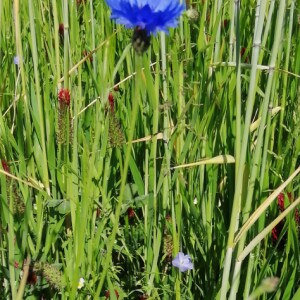Cereal killer
The fungus Claviceps purpurea has the common name of 'ergot', a word that derives from the French word for the spur of a cockerel - because that is what it resembles. If the fungus is ingested in small ammounts over a period of months, it causes the condition of ergotism, the symptoms of which include seizures, mania and psychosis, as well as vascular degeneration, leading to gangrene and, eventually, death
In medieval Europe, villages were occasionally discovered where the entire community had fallen victim to this "madness". Wider epidemics were also recorded, including one in Paris. In the 17th century a French doctor noted a link between ergotism and the consumption of rye bread
Rye is unique among European cereal crops, in that its flowers open quite early in their development, leading to the dispersal of pollen and cross-pollination between plants. Wheat, barley and oats keep their flowers closed until a later stage, meaning that each flower pollinates itself before it opens. Self-pollination is a boon for plant breeders, as it makes it much easier to develop a genetically homogenous population of a new variety of the three major cereals, which in turn makes it much easier for a farmer to manage a crop that grows in a uniform way to a uniform height and ripens at the same time across an entire field
The cross-pollinating nature of rye means that it has much more genetic variation between individual plants, leading to much less uniformity in a crop. On our walk today, the contrast between the ramshackle mix of plants in this field of rye and the billard-table levelness of the wheat and barley crops we crossed later could hardly have been more marked
The rye is not in fact a crop, but part of a mixture of seeds, planted for environmental reasons - something I'm told is called a "bumble-bird" mix, because it contains both flowers for pollinators and seed plants for birds. In addition to rye, we saw cornflower, oats, some kind of brassica, linseed, poppy and crimson clover, all in flower in a charming, colourful assembly
Another consequence of rye's early-opening flowers is that it becomes a target for spores of the ergot fungus. These infect the growing grain and develop into the spur-shaped (but also grain-shaped) pieces in the head of the plant. After harvest and milling, particles of the fungus become inter-mixed with the flour. Rye flour is particularly dark (I have a bag in the cupboard labelled "Dark Rye"), so the rather red colour of crushed ergot is hard to detect. When Incorporated into bread and consumed day after day, the result is ergotism


Comments
Sign in or get an account to comment.


